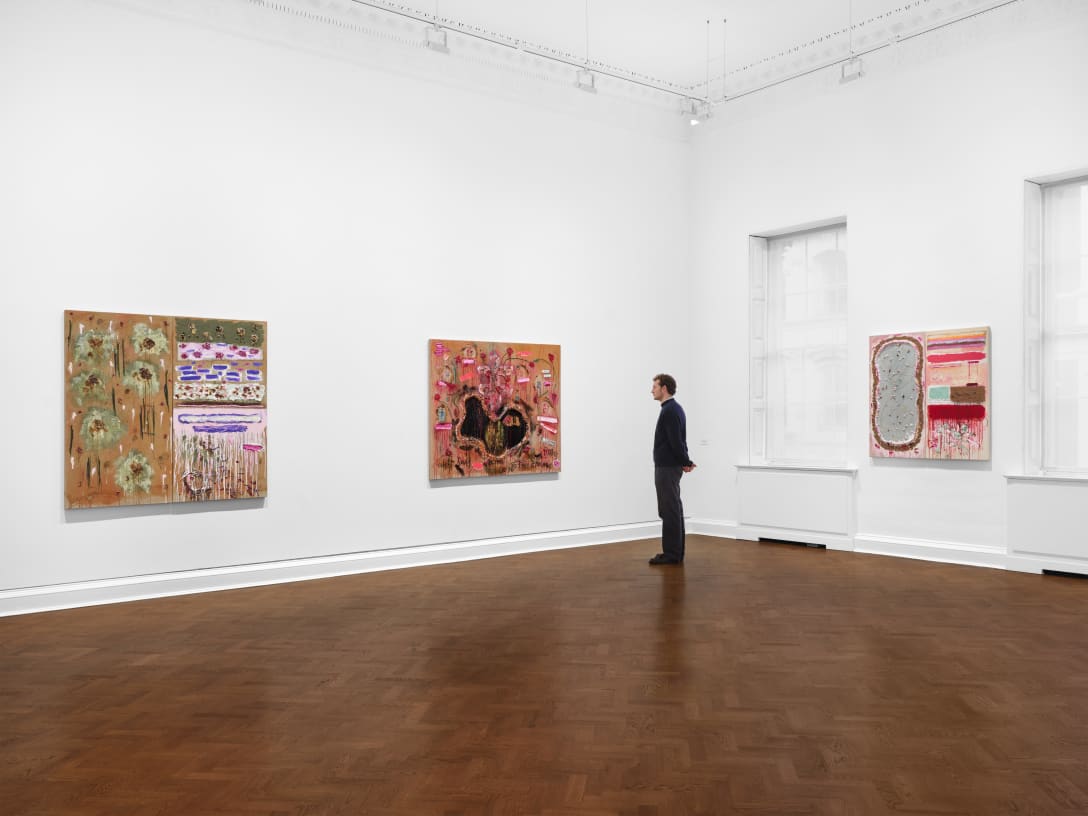

Overview
The present exhibition centres on the importance of the body in Beuys’ practice, both formally and conceptually. Images of animals prevail as well as combinations of the female figure and animal motifs. These depictions can be read as allegories of the unity of humanity and nature.
Galerie Thaddaeus Ropac presents an exhibition that brings together early works on paper and 'Backrest of a fine-limbed person (hare-type) of the 20th Century AD' (1972-1982), an important sculpture by Joseph Beuys.
From very early on in his career, Joseph Beuys drew prolifically and spontaneously. Drawing was his principal means of expression. In 1984 he told curator Bernice Rose: ‘Drawing is the first visible form in my works... the changing point from the invisible powers to the visible thing.’ He drew with the wrist, producing light lines that are tense yet delicate. The subjects of the drawings cannot always be read at first glance, with the images seeming to emerge almost accidently or intuitively. In the watercolour Untitled (1955) a female silhouette appears from a subdued swatch of colour, while an animal form hides in the undulating lines of Schwan (Swan) (ca. 1954). Forms and images also come to life thanks to language. Beuys often uses evocative titles that shed light on his compositions. The iconography of his drawings varies from female nudes and landscapes to more conceptual diagram-like shapes.
The present exhibition centres on the importance of the body in Beuys’ practice, both formally and conceptually. Images of animals prevail as well as combinations of the female figure and animal motifs. These depictions can be read as allegories of the unity of humanity and nature.
Beuys also employed unorthodox materials in his works on paper such as fat, beeswax, chalk and margarine. In the 1960s he made a series of drawings with Braunkreuz, which translates from German as ‘brown cross’, a medium that the artist invented by mixing industrial paint and hare’s blood. For Beuys, Braunkreuz symbolises earth as a protective medium. The artist’s use of organic substances demonstrates the centrality of the body in his oeuvre; it also gives a material feel to the drawings, linking them to his sculptural modes of expression. Bernice Rose stresses how ‘drawing was a structural and conceptual necessity for Joseph Beuys not merely a means to create illusion[1]’. She explains: ‘many drawings of the 1960s were conceived as concrete or emotional parallels to sculptures and later to actions.’
The sculpture Backrest for a fine-limbed person (hare-type) of the 20th Century AD (1972-1982) will converse with the surrounding drawings. Cast in iron from an original plaster form lined with felt that belonged to the daughter of Joseph Beuys’s neighbour, the artist Gotthard Graubner, this object’s original function was a therapeutic backrest used to support an injured body. By reproducing the backrest in iron, Joseph Beuys rendered it shell-like and strong, enhancing its protective resonance. Art Historian Karin Adelsbach speaks of ‘the zoomorphic and anthropomorphic’ quality of the sculpture, hinted at in the title. Part of Joseph Beuys’s drive to heal society involved encouraging a connection with our primitive, animalistic nature. In his work the animal figure embodies a lost state of human innocence and the hare is a prevailing symbol. He saw in the hare’s behaviour potential models for human conduct, in particular agility and energy as the conditions for social creativity. With Backrest of a fine-limbed person (hare-type) of the 20th Century AD Joseph Beuys addresses individual and universal suffering, as well as the role of art as a means of healing. As Bernice Rose explains: ‘Beuys wounded in the World War II and living in a divided Germany, had come to see human experience as it is reflected through the body’s drives and sensations, its pleasure and pain. The metaphor of the wounded body is at the heart of his work, a motif woven throughout as both its source and essence[2].’
Joseph Beuys (Krefeld, Germany, 1921 – Düsseldorf 1986) is widely regarded as one of the most influential artists of the second half of the 20th century. His extensive work is grounded in concepts of humanism, social philosophy and anthroposophy; it culminates in his "extended definition of art" and the idea of social sculpture as a gesamtkunstwerk, for which he claimed a creative, participatory role in shaping society and politics. The large range of highly symbolic mediums such as felt, fat or honey, is closely connected to his almost shamanic practice, which has been widely expressed in the field of performance and in pedagogic actions. By his unique artistic practice, Joseph Beuys has initiated numerous fascinating debates that are still relevant today.
[1] Bernice Rose, ‘Thinking is Form : The Drawings of Joseph Beuys’, MoMA, No. 13, Winter-Spring 1993
[2] Ibid.














































































































































































